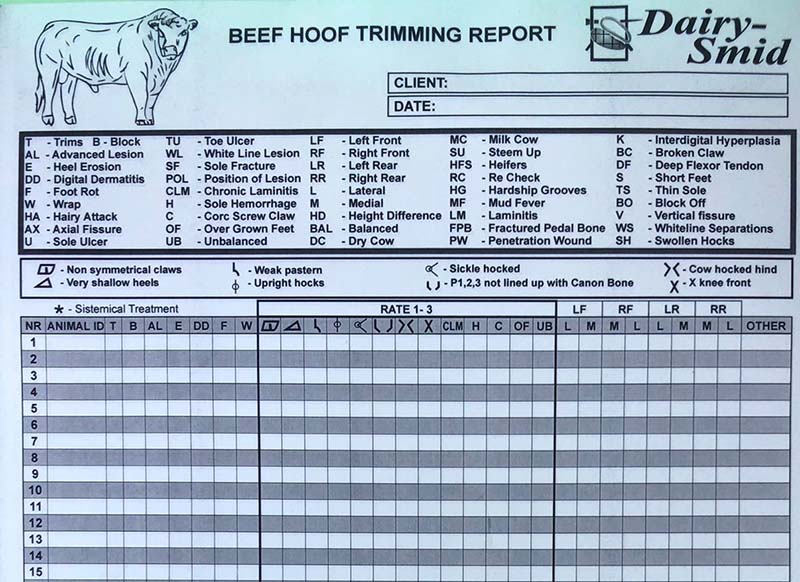In parts 1 and 2 of this hoof care series I explained the factors that influence overgrown feet and how to identify the origin of the problem. I also touched on genetic disorders and how it re-manifests after a trim. This brings us to a frequently asked question: Is it ethical to trim feet?
To answer this question, I must refer you back to part 1 of the series. In this article I discussed the reasons why long feet occur in cattle, as well as the influence that management and different surface types have on the growth-to-wear ratio of claws.
Given the facts, there are thus two answers to this question. ‘Yes’ if the feet are long because of different surfaces and management, and ‘no’ if the main reason is to ‘hide’ a genetic problem. In part 2 of the series, I explained how a genetic problem will always reoccur and that cattle with genetic defects should never be used in a breeding programme.
Selecting for better feet

Can anything be done to select for better feet? The answer is yes. Dairysmid has been working alongside dedicated cattle breeders whose breeding goal is good feet and legs. We identify the best bulls with the best feet which they then use on their breeding cows.
Bulls are therefore trimmed twice in their lifetime at specific stages. Meticulous records are kept for traceability purposes.
It is much easier for a professional hoof trimmer to identify a genetic disorder while the foot is raised from the ground and under secure restraint in a hydraulic hoof trimming chute specifically constructed for this purpose. To evaluate a foot while the animal stands on the ground is not an accurate method.
Trimming of feet
The first trim would be after Phase D and after the breed association’s inspectors approved the best bulls and disqualified those with leg and foot problems. However, we have on occasion disqualified an additional 10% of these approved bulls because of foot-related problems.
Hoof trimming is a valuable selection tool, and in the process bulls with the best feet in relation to the group can be selected and used as sires for the next generation.

Hoof trimmers are trained to notice genetic disorders and each foot is rated on a scale from 0 to 3 while hooves are being trimmed – a score of 0 is perfect, whereas 3 signifies severe problems.
The second trim takes place six to eight weeks prior to bulls being auctioned off. As explained in part 1, chances are good that these bulls’ feet will be a few millimetres overgrown, especially if they are kept in an area with deep, soft sand for extended periods.

The trim also serves the purpose of identifying any genetic disorders. By selling only the best bulls, buyers can rest assured that the bulls they buy will contribute to their herds – in this regard, the hoof trimming report issued serves as proof.
Breeders making use of this service can now use science and facts to breed for better feet and legs in their studs. – Jaco de Bruin, consultant, Dairysmid
Read Part 4 – Horizontal fissures.
For more information, send an email to
office@dairysmid.com or visit www.dairysmid.com.


